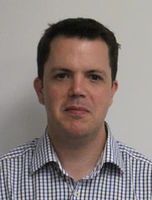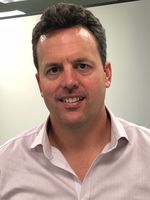Wellington > Private Hospitals & Specialists >
Wakefield Hospital - Orthopaedic Surgery
Private Surgical Service, Orthopaedics
Description
Wakefield Hospital is the largest private hospital in the Wellington region. It is located in the suburb of Newtown and is owned and operated by parent company Evolution Healthcare (NZ) Limited.
Based in the heart of Wellington, Wakefield Hospital offers a wide range of high-quality private healthcare services with a team of experienced specialists and the latest in techniques and equipment available. We have a proud history of offering our patients the very best of care in our modern and comfortable facilities.
Private healthcare allows choice, flexibility and access to specialists who use the latest techniques in treatment. You are free to nominate your specialist and can expect your consultation and treatment in a timely manner without waiting list restrictions. Early treatment and intervention is often pivotal in ensuring the best outcome for patients.
Consultants
-
Mr Jon Cleary
Orthopaedic Surgeon
-

Mr Gareth Coulter
Orthopaedic Surgeon
-

Mr Pete Devane
Orthopaedic Surgeon
-
Mr Ilia Elkinson
Orthopaedic Surgeon
-

Mr Giles Foley
Orthopaedic Surgeon
-

Mr Andrew Matthews
Orthopaedic Surgeon
-
Mr Andrew Meighan
Orthopaedic Surgeon
-
Mr Jonathon Richards
Orthopaedic Surgeon
-

Mr Robert Rowan
Orthopaedic Surgeon
-
Mr Mark Sherwood
Orthopaedic Surgeon
Procedures / Treatments
Two or three small incisions (cuts) are made in the ankle and a small telescopic instrument with a tiny camera attached (arthroscope) is inserted. This allows the surgeon to look inside the joint, identify problems and, in some cases, operate. Tiny instruments can be passed through the arthroscope to remove bony spurs, damaged cartilage or inflamed tissue.
Two or three small incisions (cuts) are made in the ankle and a small telescopic instrument with a tiny camera attached (arthroscope) is inserted. This allows the surgeon to look inside the joint, identify problems and, in some cases, operate. Tiny instruments can be passed through the arthroscope to remove bony spurs, damaged cartilage or inflamed tissue.
An incision (cut) is made in the front of, and several smaller cuts on the outside of, the ankle. The damaged ankle joint is replaced with a metal and plastic implant.
An incision (cut) is made in the front of, and several smaller cuts on the outside of, the ankle. The damaged ankle joint is replaced with a metal and plastic implant.
Surgery to relieve carpal tunnel syndrome involves making an incision (cut) from the middle of the palm of your hand to your wrist. Tissue that is pressing on the nerve is then cut to release the pressure.
Surgery to relieve carpal tunnel syndrome involves making an incision (cut) from the middle of the palm of your hand to your wrist. Tissue that is pressing on the nerve is then cut to release the pressure.
An incision (cut) is made over the relevant part of the spine and the bulging part of the painful disc is cut off and removed.
An incision (cut) is made over the relevant part of the spine and the bulging part of the painful disc is cut off and removed.
Small incisions (cuts) are made in the hip area and a small telescopic instrument with a tiny camera attached (arthroscope) is inserted. This allows the surgeon to look inside the joint, identify problems and, in some cases, operate. Tiny instruments can be passed through the arthroscope to remove loose, damaged or inflamed tissue.
Small incisions (cuts) are made in the hip area and a small telescopic instrument with a tiny camera attached (arthroscope) is inserted. This allows the surgeon to look inside the joint, identify problems and, in some cases, operate. Tiny instruments can be passed through the arthroscope to remove loose, damaged or inflamed tissue.
An incision (cut) is made on the side of the thigh to allow the surgeon access to the hip joint. The diseased and damaged parts of the hip joint are removed and replaced with smooth, artificial metal ‘ball’ and plastic ‘socket’ parts.
An incision (cut) is made on the side of the thigh to allow the surgeon access to the hip joint. The diseased and damaged parts of the hip joint are removed and replaced with smooth, artificial metal ‘ball’ and plastic ‘socket’ parts.
Several small incisions (cuts) are made on the knee through which is inserted a small telescopic instrument with a tiny camera attached (arthroscope). This allows the surgeon to look inside the joint, identify problems and, in some cases, make repairs to damaged tissue.
Several small incisions (cuts) are made on the knee through which is inserted a small telescopic instrument with a tiny camera attached (arthroscope). This allows the surgeon to look inside the joint, identify problems and, in some cases, make repairs to damaged tissue.
An incision (cut) is made on the front of the knee to allow the surgeon access to the knee joint. The damaged and painful areas of the thigh bone (femur) and lower leg bone (tibia), including the knee joint, are removed and replaced with metal and plastic parts.
An incision (cut) is made on the front of the knee to allow the surgeon access to the knee joint. The damaged and painful areas of the thigh bone (femur) and lower leg bone (tibia), including the knee joint, are removed and replaced with metal and plastic parts.
Several small incisions (cuts) are made in the shoulder through which is inserted a small telescopic instrument with a tiny camera attached (arthroscope). The surgeon is then able to remove any bony spurs or inflamed tissue and mend torn tendons of the rotator cuff group.
Several small incisions (cuts) are made in the shoulder through which is inserted a small telescopic instrument with a tiny camera attached (arthroscope). The surgeon is then able to remove any bony spurs or inflamed tissue and mend torn tendons of the rotator cuff group.
This surgery involves making several small incisions (cuts) on the shoulder through which is inserted a small telescopic instrument with a tiny camera attached (arthroscope). This allows the surgeon to look inside the shoulder, identify problems and, in some cases, make repairs to damaged tissue.
This surgery involves making several small incisions (cuts) on the shoulder through which is inserted a small telescopic instrument with a tiny camera attached (arthroscope). This allows the surgeon to look inside the shoulder, identify problems and, in some cases, make repairs to damaged tissue.
An incision (cut) is made over the relevant part of the spine. Two or more vertebrae (the small bones that make up the spinal column) are fused together with bone grafts and/or metal rods to form a single bone.
An incision (cut) is made over the relevant part of the spine. Two or more vertebrae (the small bones that make up the spinal column) are fused together with bone grafts and/or metal rods to form a single bone.
An incision (cut) is made over the damaged tendon. The damaged ends of the tendon are sewn together and, if necessary, reattached to surrounding tissue.
An incision (cut) is made over the damaged tendon. The damaged ends of the tendon are sewn together and, if necessary, reattached to surrounding tissue.
Visiting Hours
Daily 9:00am to 9:00pm.
Please note that Level 2 (the Cardiac Ward), ICU and HDU are closed for a rest period between 1:00pm and 3:00pm daily.
Refreshments
Snacks can be purchased from the cafeteria between 9:00am and 2:00pm Monday to Friday.
Parking
Free parking is provided within the hospital grounds.
Accommodation
Wakefield Hospital has a limited number of standard apartments on site which can be booked for family if required. These units sleep up to four people and must be booked through our reception prior to your hospital admission.
To book an apartment please email us or contact the hospital reception on (04) 381 8100 - Extn 0.
Pharmacy
Nearest community pharmacy here
Website
Contact Details
Wakefield Hospital
Wellington
-
Phone
(04) 381 8100
-
Fax
(04) 381 8101
Email
Website
Toll Free Phone: 0800 WAKEFIELD (0800 925 334)
Florence Street (off Riddiford Street)
Newtown
Wellington
Street Address
Florence Street (off Riddiford Street)
Newtown
Wellington
Postal Address
Wakefield Hospital
Private Bag 7909
Wellington 6242
Was this page helpful?
This page was last updated at 11:22AM on May 30, 2024. This information is reviewed and edited by Wakefield Hospital - Orthopaedic Surgery.

